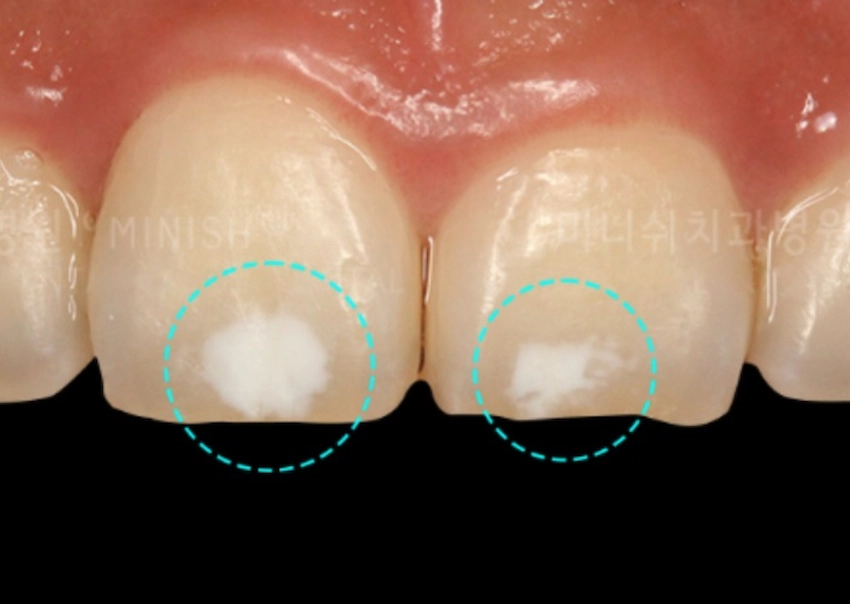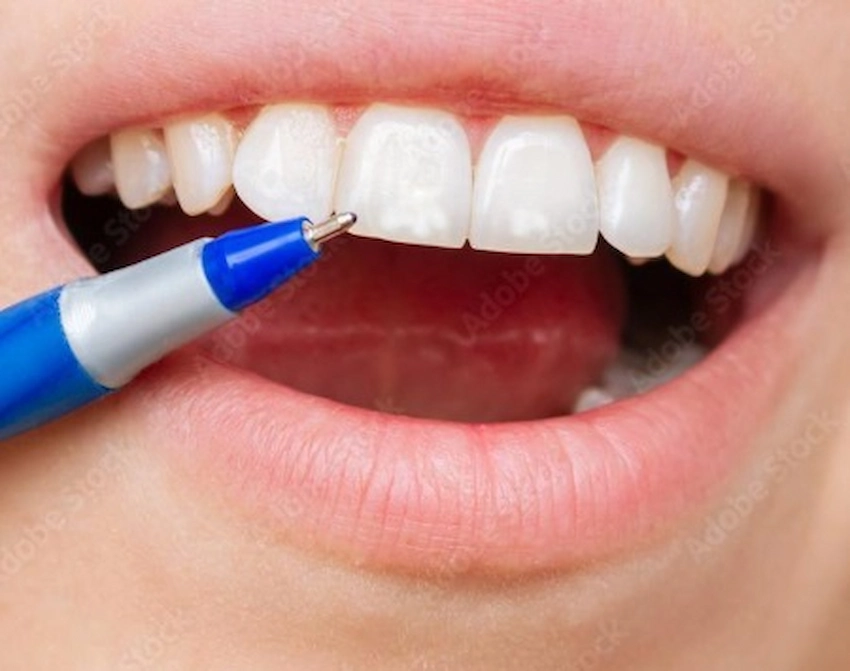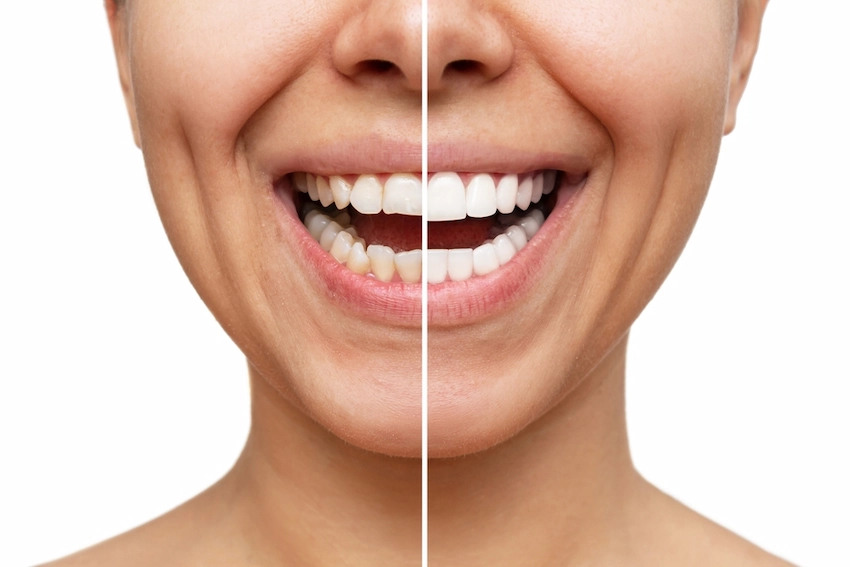🦷Causes And Treatments For White Spots On Teeth

White spots on teeth can be caused because of a host of dental issues. The changes in the appearance of white spots on teeth, such as matters of enamel hypoplasia, fluorosis, or poor oral hygiene are all reasons to seek treatment.
Wondering what could lead to these unexpected surprises on the pearly whites; consider them not as a cause for concern, but as an invitation to learn about possible treatment options. A quick acquaintance with the facts about white spots on teeth will not only equip one with the knowledge on what leads to such imperfections, but will also help in finding ways to tackle them and to restore the beautiful smile that the person deserves.
What Are White Spots on Teeth?
White spots on teeth are relatively common dental concerns that can occur for various reasons. These spots are usually distinct from the surrounding enamel and can range in size and intensity. Together with this, white spot on teeth is associated with a process that goes on beneath the surface called demineralization while minerals that help in the system of forming strong and healthy bodies pause and go which is apparent in terms of aesthetic quality of appearance.
Though bearing the purely superficial nature, they can become a source of a complex due to the denticulation problems appearing since the primary stage therefore the early detection of white spots on teeth and careful consideration of the situation and taking the basic actions for remedial measures is of great significance. By being aware of how these spots occur and what they may mean, one can then do all that is necessary to ensure complete and accurate health care reporting.
Common Causes of White Spots

The appearance of white spots can be attributed to a variety of reasons. The following are some of the most common causes behind the appearance of white spots on teeth:
- Poor Oral Hygiene: Individuals with inadequate brushing and flossing habits may notice poor oral hygiene leading teeth that develop plaque as a film-resembling substance which if undetected later on may cause the dentin beneath the enamel to lose its whiteness and create white spots.
- Enamel Hypoplasia Enamel Hypoplasia: is a surprising condition that affects the enamel as it develops during early childhood or before the eruption of the tooth. The condition may cause important factors such as malnutrition, some drugs, and diseases that may affect pregnant women and the process of birth and dentin. T
- Fluorosis: is a condition that results from over-exposure to fluoride that happens primarily during early childhood when teeth are developing. This condition leads to undesirable changes in the appearance of the teeth, and mottle can occur leaving teeth with patches of varying shades of white or even brown and a grainy texture.
- Acidic Environment: Some gastrointestinal issues like acid reflux can negatively impact teeth and make them more vulnerable to the effect of gastric acids, which will result in the enamel wearing away faster. In rare situations, if teeth are worn, the subsequent loss of their calcium may be revealed as white spots there.
- Preventing White Spots: In order to be sure that no white spots will appear on your teeth, some pieces of advice were prepared. These are not only the current trends in these two areas, but also the most suitable ones for the human beings who can be responsible for their health condition.
- Regular Brushing: It is more than just essential to have a daily good oral hygiene practice like brushing twice a day using a fluoride toothpaste that prevents aside from not only eliminating the regions affected by dental plaque but also further a demineralization process of the teeth. Brushing should be done diligently.
- Use of Dental Floss: Lack of proper use of dental floss can lead to a lack of contact between the bristles and the plaque, as well as compact food particles, leading to bad breath, and decay. The use of dental floss should be once a day, a suitable time is before bedtime, is significant, and it should be done correctly and thoroughly.
- Fluorosis: Fluorosis is a disease derived from excessive exposure to fluoride, mostly in the early stages of children’s development when teeth are growing. That is the point when the disease is most likely to occur and the result of this is teeth that have a not-pleasing appearance with a mottled condition.
- Factors Related to Diet: A diet that is high in starches or sugary products and acidic beverages will most likely be the cause of plaque formation and the thinning of the enamel on the teeth respectively. All these factors are capable of leading to white patches on the surface of the teeth. Those people who desire to protect themselves from the above delinquencies should consider it very important to follow a well-balanced diet and refrain from the excessive consumption of these products. Indeed they are the reasons for unhealthy sports formation on teeth.
- Enamel Hypoplasia: Enamel Hypoplasia is an inherited condition in which there is little enamel formation, hence resulting in a person with white spots. If such is the case, the family should make sure that they take all preventative measures and talk to their children about oral hygiene matters. Good cleaning methods with brushes should be adopted, and tooth decay should be avoided.
- Acidic Environment: Some GI disorders induce teeth to erode faster due to the exposure of teeth to harsh acids from the stomach. The most frequent example is whenever there is acid reflux which ends up disturbing the teeth and making them more prone to corrosion. Such several and more affected teeth will, in the vast majority of cases, be found in front and will appear as white spots due to them being eroded.
This way they will be in a prime position to handle this problem without it advancing to severe stages that may be a risk to both their oral health and their overall body part.
Professional Solutions for Dealing with White Spots on Teeth

Have you ever been troubled by the appearance of white spots on your beautiful smile? If so, you are probably already aware that these blemishes detract substantially from your smile’s overall appearance and lessen your confidence level, so it is essential for you to know that there are numerous professional dental procedures today, capable of restoring its stunning original condition, which are utterly worth learning about!
This article provides a comprehensive overview of the most efficient methods of getting rid of white stains on teeth and restoring that natural, healthy texture on which you can count every time a beautiful and radiant smile is required. There is no need to worry about such issues anymore. A consultation will help identify the most suitable option for you to regain that beautiful smile.
Fluoride Treatments for Teeth
Fluoride varnishes are specifically made by dentists and consciously applied to the enamel of your teeth, with the aim of remineralizing it so that white spots appearing on the outer surface are diminished. This process works to strengthen the outer shell and also helps in reversing minor cases of tooth decay thus making it an efficient remedy for white spots caused by mild enamel or structural damages.
Microabrasion Technique for Tooth Enamel Restoration
This revolutionary technique can be used in a way that is favorable to your health without any negative impacts on your body, and it requires expertise and experience on the side of dentists and dental specialists. Micro-abrasion is a process where super thin layers of your tooth’s enamel are removed as small particles to effectively enhance the visibility of white spots or seams; thus rendering an even tone and texture of the tooth.
Teeth Whitening for Achieving Even Tone
The incredibly advanced teeth whitening procedures performed exclusively by dentists and specialists in dental care seemingly always manage to really guide patients through whitening products to prevent the yellowing of their teeth\nand to bring back the elusive white shade that was so perfectly even, so invisible, and so much like the neighboring tissues in their mouth or rather the like the adjacent gum tissues. Perhaps there was never any doubt that these specialized treatments when carried out by well trained dentists.
Frequently Asked Questions About Causes and Treatments for White Spots on Teeth
White spots on teeth are often caused by demineralization of tooth enamel, which can result from poor oral hygiene, excess fluoride, or tooth decay. Other factors, such as a diet high in acidic foods or a history of braces, can also contribute to the appearance of white spots.
Yes, poor oral hygiene can lead to the accumulation of plaque, which causes mineral loss in the enamel, resulting in white spots. Regular brushing and flossing help prevent the buildup of plaque and protect enamel from demineralization.
White spots do not necessarily mean you have cavities, but they can be an early sign of enamel erosion or demineralization that may lead to cavities if left untreated. It’s important to address white spots early to prevent further dental issues.
Treatment options for white spots at home include using remineralizing toothpaste that contains fluoride or calcium phosphates. However, it’s important to consult with your dentist for personalized advice and treatment options.
Professional treatments for white spots include fluoride varnish, microabrasion, or composite bonding. In more severe cases, your dentist may recommend veneers or crowns to restore the aesthetic appearance of your teeth.
Teeth whitening treatments may not be effective for white spots, as they can actually make them more noticeable by lightening the surrounding enamel. It’s best to consult with your dentist before considering whitening treatments.
Yes, white spots can be prevented by maintaining good oral hygiene, avoiding excessive fluoride use, and reducing the intake of acidic or sugary foods and drinks. Regular dental check-ups also help prevent the development of white spots.
White spots can be permanent if left untreated, but early intervention with remineralization treatments or cosmetic procedures can improve or even eliminate their appearance. It’s important to address the issue as soon as possible to achieve the best results.
Yes, white spots are commonly seen after braces due to the difficulty of cleaning around brackets and wires, leading to plaque buildup. Proper oral hygiene during orthodontic treatment, along with fluoride treatments, can help prevent white spots.
In some cases, white spots may indicate a more serious issue, such as a nutritional deficiency or excessive fluoride intake. If you notice persistent white spots on your teeth, it’s important to consult with your dentist for an evaluation and appropriate treatment.




